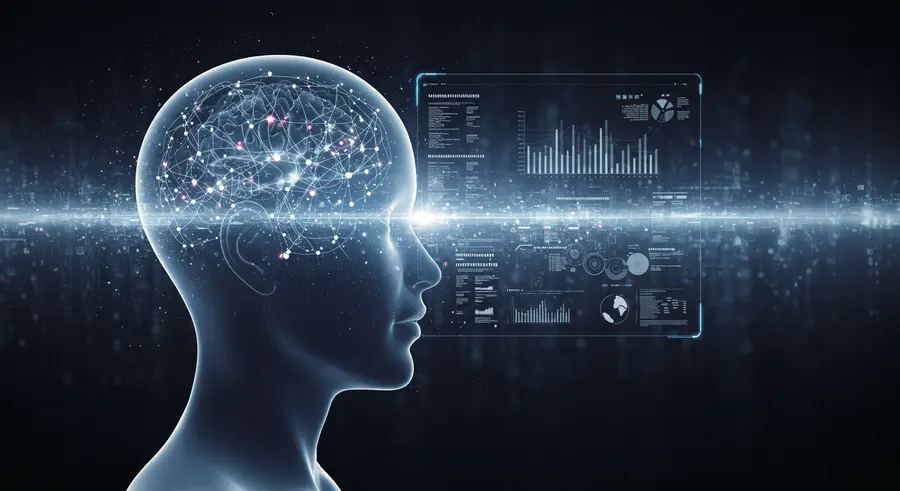Appearance
Beyond the Keyboard: Your Mind as the Ultimate Interface
For decades, our primary way of talking to computers involved clicking a mouse and typing on a keyboard. It was a functional, if somewhat clunky, conversation. But imagine a world where your thoughts alone could change the music, open an application, or even move a robotic arm. This isn't a distant dream; it's the rapidly unfolding reality of Brain-Computer Interfaces (BCIs).
What are BCIs and Why Do They Matter?
At its core, a BCI is a direct communication pathway between a wired brain and an external device. Think of it as a translator that takes the electrical signals from your brain and turns them into commands a computer can understand.
Historically, Human-Computer Interaction (HCI) focused on making interfaces easy to learn and use. We moved from complex command lines to graphical user interfaces (GUIs) with icons and menus. This was a huge leap, but still relied on physical actions. BCIs take this a step further, offering a truly intuitive interaction by bypassing traditional input methods entirely.
Why is this a big deal?
- Accessibility: For individuals with severe disabilities, BCIs offer a lifeline, enabling communication, control of prosthetics, and interaction with their environment in ways previously impossible.
- Enhanced Experience: Imagine a surgeon controlling instruments with precision using only their thoughts, or a gamer experiencing unparalleled immersion. BCIs promise a seamless integration of our digital and physical worlds.
- Efficiency: The speed of thought is far greater than the speed of typing. In critical situations, faster reactions can make all the difference.
How Do BCIs Work? A Simplified View
BCIs generally fall into two categories:
- Non-invasive: These systems use sensors placed on the scalp, like EEG (electroencephalography) headsets, to detect brain activity. They are easier to use but offer less precise data.
- Invasive: These involve surgically implanting electrodes directly into the brain. While more complex, they provide much higher resolution and more reliable signals. Neuralink, for example, is a well-known company exploring invasive BCI technology.
Here’s a simplified look at the process:
- Brain Activity: When you think or intend to perform an action, specific areas of your brain generate electrical signals.
- Signal Capture: Electrodes (either on the scalp or implanted) detect these tiny electrical changes.
- Signal Processing: The raw brain signals are then amplified and filtered to remove noise.
- Feature Extraction: Algorithms identify patterns in the signals that correspond to specific thoughts or commands.
- Device Control: These patterns are translated into commands that control an external device, such as a computer cursor, a prosthetic limb, or even a drone.
The Evolution of Interaction: From Click to Thought
The journey of HCI has always been about making technology feel more natural and responsive to us.
- Early Days (1940s-1970s): Command-line interfaces. Users had to remember specific text commands.
- The GUI Revolution (1980s): The introduction of graphical user interfaces, mice, and icons made computers accessible to the masses.
- Touch and Gestures (2000s-Present): Smartphones and tablets brought touchscreens, and motion sensors enabled gesture-based interactions.
- Voice and AI (2010s-Present): Siri, Alexa, and Google Assistant made voice control common. AI further personalized interactions.
- BCIs (Emerging): The ultimate step in natural interaction, where your brain directly interfaces with technology.
This progression highlights a clear trend: moving towards more direct, intuitive, and less physically demanding forms of interaction.
Visualizing the Future: Mind-Powered Control
Imagine a future where a simple mental command brings up your preferred news feed, or a focused thought adjusts your smart home's lighting to match your mood.

This illustration captures the essence of this shift: the human mind at the center, seamlessly connected to and controlling the digital realm.
The Path Ahead
While the potential of BCIs is immense, challenges remain. Ethical considerations around data privacy, the complexity of brain signals, and the need for robust and reliable systems are all areas of active research.
However, the rapid advancements, with companies like Neuralink already implanting chips in humans, indicate that mind-computer interaction is no longer a futuristic fantasy. It's an evolving field that promises to redefine our relationship with technology, making it more personal, more powerful, and truly an extension of ourselves.
The keyboard and mouse have served us well, but the future of interaction is far more fascinating. It's a future where your mind is the ultimate interface.